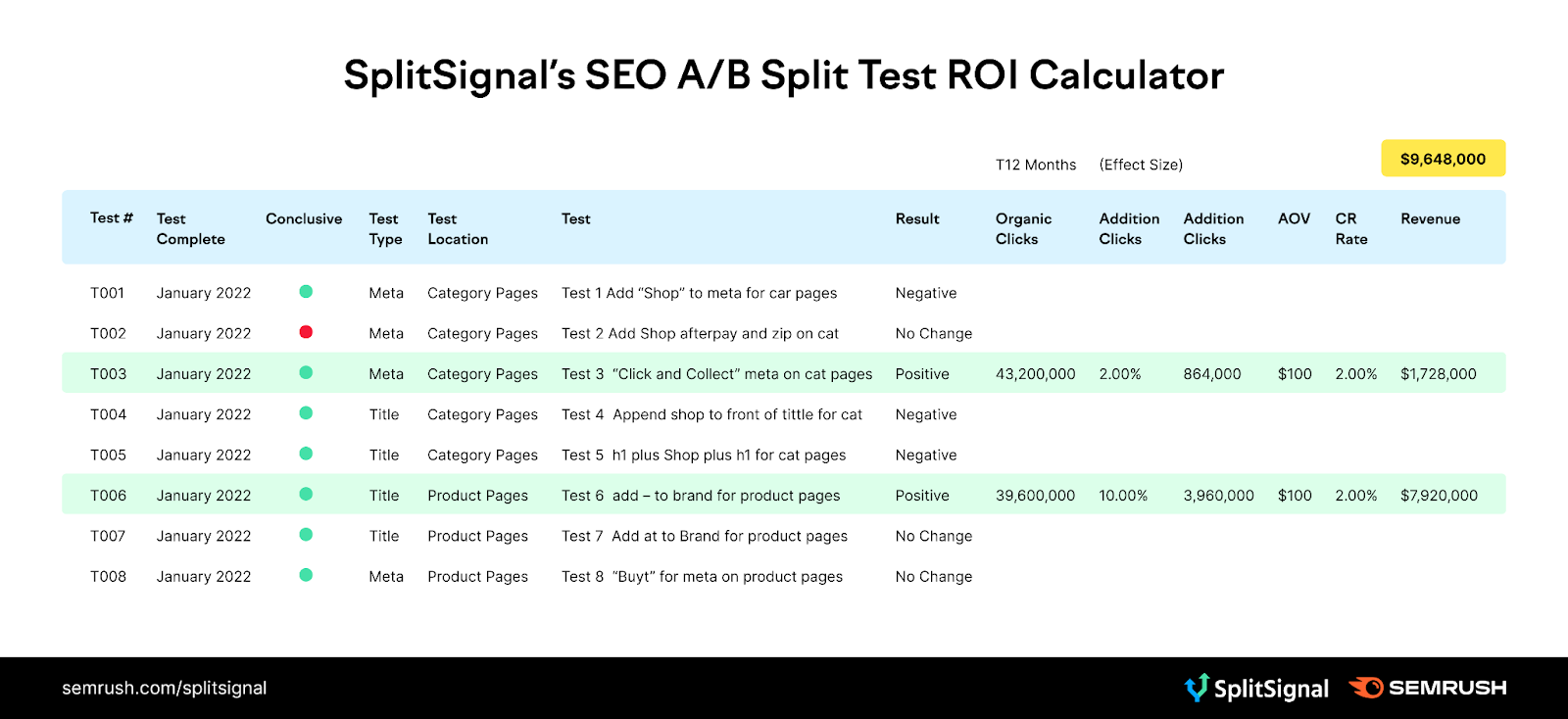Search engines are an important source of traffic for almost all companies and organizations. Knowing what impact a change to your website can have on organic traffic can be challenging to predict. With SEO Split Testing, you can be sure that any changes that are made will yield positive results. This prevents you as an organization from wasting time, money, and energy on changes that ultimately make no or only a limited positive contribution.
In this post, we will examine the benefit of SEO split testing, what a “No Change Result” is, and how having this knowledge allows you to test further for the organic lift so that you can hit your SEO goals.
What Are SEO Experiments?
An SEO experiment is just another word for an SEO A/B split test.
SEO split testing allows you to see the result of an SEO optimization before spending valuable time and (development) resources to make the actual change to your website.
SEO experiments allow you to test with a group of templatized URLs where the traffic has been split equitably into a control group and a variant group.
In the SEO experiment, you make one change to the variant group URLs. You then measure the difference between the two groups with Google’s CausalImpact Model, which uses a Bayesian structural time series to determine the difference between organic clicks from Google’s search engine results to the control and variant groups.
Many SEOs think of CRO tests when they think about SEO split-testing. For more information on the difference between these test types, check out our blog about how CRO tests and SEO split-testing are different.
How Can Split Testing Affect SEO?
SEO split-testing, better known as SEO A/B split-testing, allows an SEO professional to test out optimizations to prove whether they will yield a positive change, no change, or a negative change. A positive change would show an increase in clicks from Google’s SERPs (search engine result pages). Once a positive result is received, the split test can be put into production by the development team.
By prioritizing optimizations that have been tested to result in a positive lift in organic traffic, the SEOs can show ROI (return on investment) from organic traffic. Now you can use SEO experiments that are statistically relevant to back up the SEO ROI.
The predicted increase in organic clicks along with the AOV (average order value) or revenue per visit (RPV) helps show the future ROI over a 12-month period. This SEO ROI can help to prioritize the specific SEO optimizations in the development queue and also helps to showcase the work the SEO team is performing to management.

How Can No Change SEO Tests Affect Your SEO Strategy?
We know from experience that when testing SEO optimizations, you will probably receive statistically relevant positive results 10% of the time. The rest of the time you will have either achieved a no-change result or a negative change result.
Learn more about negative SEO split-tests and SEO KPIs
If a test does not have a positive result it doesn’t mean you ran a bad test, every test holds a valuable lesson.
Knowing what works and what doesn’t work for your website and target audience is extremely valuable when optimizing the organic channel. It gives you the chance to unravel the black box that Google can be. Insight is a pillar of all successful experiment programs. Tests that have no or even a negative impact save time and money. In addition, you are protected against a deteriorating situation.
Gaining knowledge of what an SEO optimization will do prior to rolling it out across thousands of pages on an enterprise site gives you the opportunity to prioritize SEO changes.
Prioritizing Positive SEO Test to Your Dev Que
The goal is to learn which changes have a positive result so that the optimizations you provide to your dev team will have a positive lift in organic traffic.
You can document the future SEO ROI with the SplitSignal ROI calculator. This allows you to prove an increase in revenue against a positive SEO test to your dev team so that you can prioritize this SEO optimization to your dev environment. It also allows you to report up to the C-suite on how SEO split testing is allowing you to progress to your SEO goals on a quarterly basis.
Stop Guessing When It Comes to SEO Changes
We can no longer stick to SEO best practices like a hard line in the sand. We have found after doing hundreds of SEO tests that results vary on different sites, within and across industries. Given the impact changes to your website can have, it’s a good idea to test before rolling changes out on your website.
Are you hitting your SEO goals? Or are you struggling to understand if the changes you are making are having any effect, or worse, a negative effect?
Contact SplitSignal and start your quarterly reporting off with data that backs up your optimizations, and which actually helps you achieve your SEO goals.
Does your website qualify for split testing with SplitSignal?
Read our knowledge base article for a better understanding of organic traffic requirements and requirements for templatized pages and the number of pages to organic traffic.
